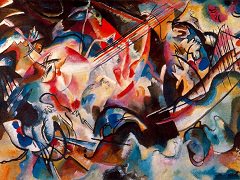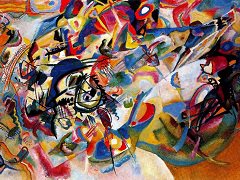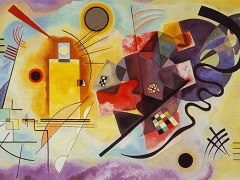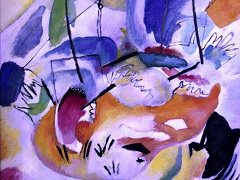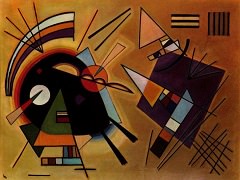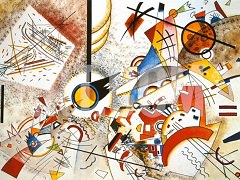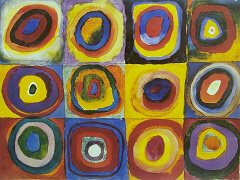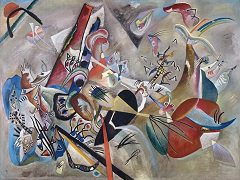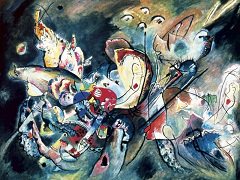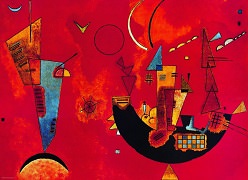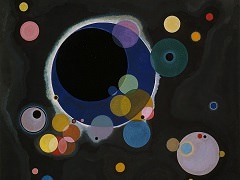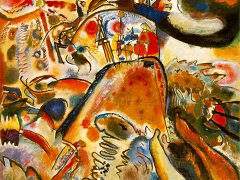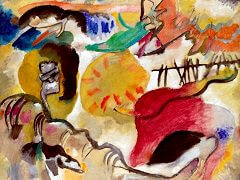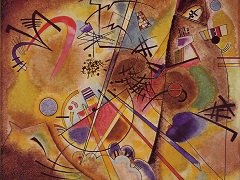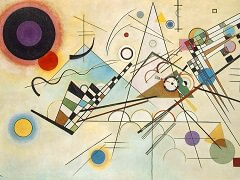Blue Sky, 1940 by Wassily Kandinsky
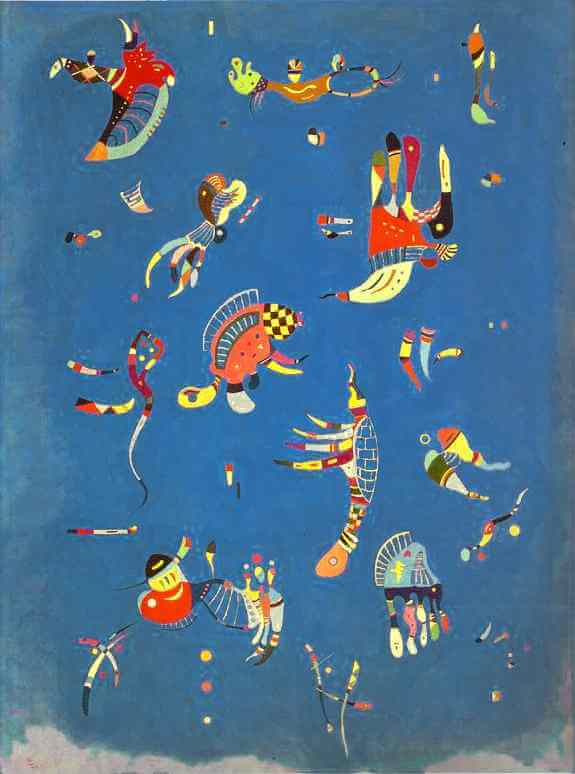
Weightlessly hovering in a cloudless blue sky, the piscatorial birds in Sky Blue are as irrational and whimsical - yet as valid - as some of Kandinsky's ruminations about painting. The following statements about artistic
mathematics could be taken as a commentary on this painting, where bodies without volume, each displaying its individual character, constitute an aquacelestial community:
Take one apple and put another next to it. You will have two.
By this simple method of adding you can produce hundreds and thousands of apples, and this kind of addition never ends. Arithmetical progression. Addition in art is enigmatic. Yellow + yellow = yellowx2. Geometrical progression.
Yellow + yellow + yellow + yellow .. . = gray. The eyes get tired from too much yellow: physiological limitations.
Thus addition turns into subtraction and ends with zero. This is "irrational," "nonsense."
Distrust pure reason in art and do not try to "understand" it by following the dangerous path of logic.
Neither reason nor logic can exercise problems horn art, yet constant corrections by means of the "irrational" are indispensable. It is "feeling" that correct, "brain.". . .
After it has been pointed out that addition in art can easily turn into subtraction we now observe the contrary, i.e., [in abstract art] subtraction becomes addition. The eliminated object does not reduce the means of expression but multiplies them infinitely.
This is artistic mathematics - contrasting with mathematics of the sciences....

